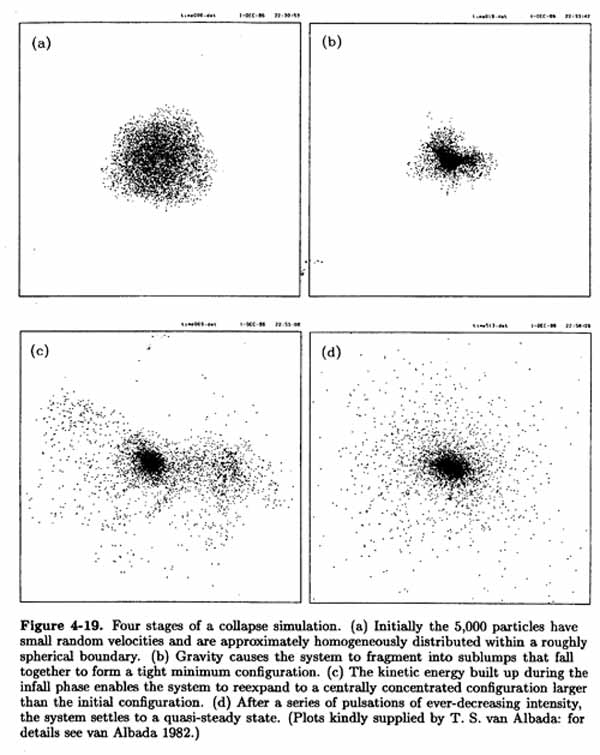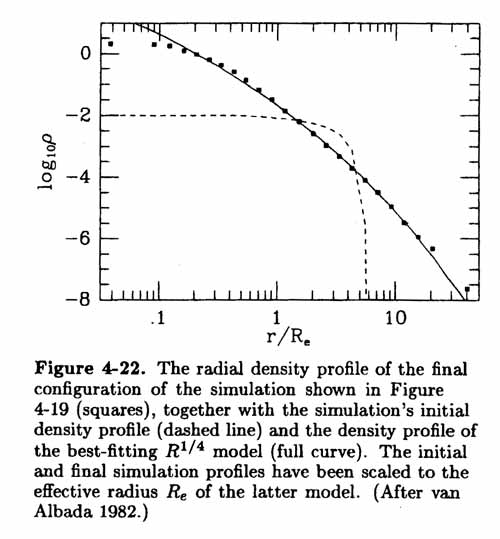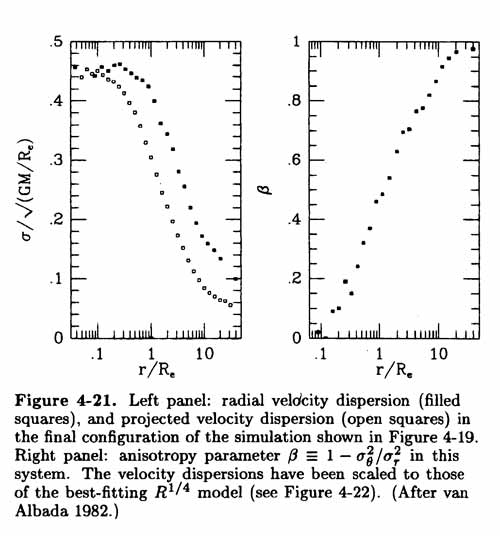

Right: The initial and final density distributions. Constant density becomes roughly de Vaucouleurs law.


Right: Anisotropy parameter shows isotropic velocities at the center, becoming increasingly radially anisotropic with increasing radius. The orbits of the outermost stars are purely radial.
Original paper: van Albada 1982 [o-link].